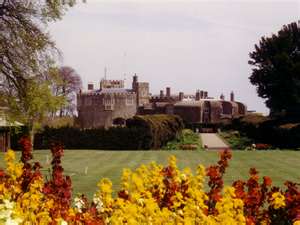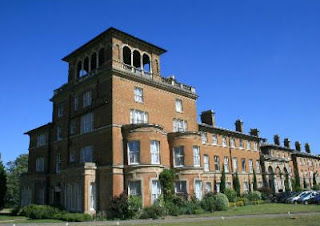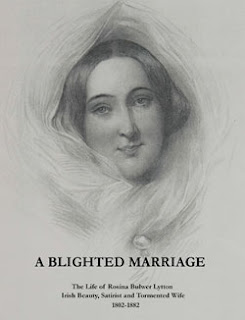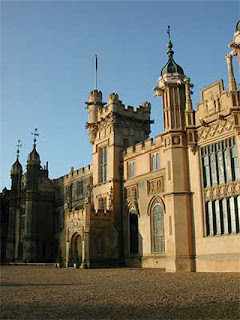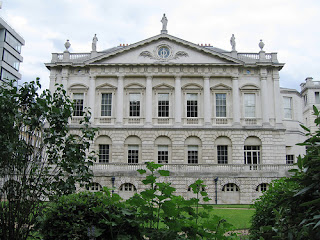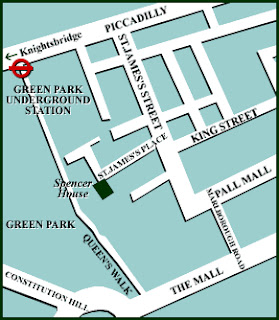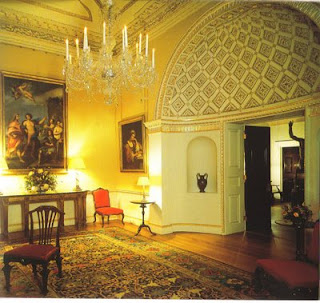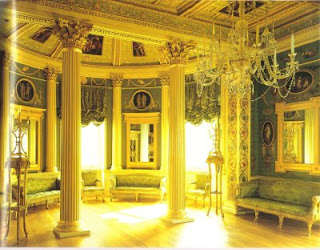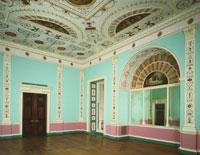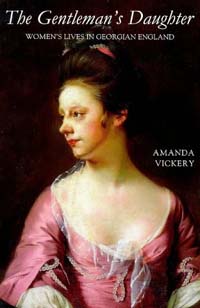Continuing in our quest for Stately Homes at which to stay, we bring you some of the more impressive –
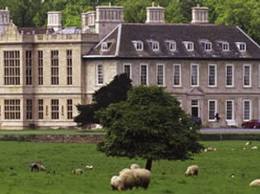 |
| Stapleford Park |
Surrounded by the magnificent 500 acres of Capability Brown landscaped grounds Stapleford Park is the perfect country sporting estate and sits in the heart of Leicestershire, near Melton Mowbray, minutes from Rutland Water. The Hall was the seat of the Sherard family, later the Earls of Harborough and from 1894, of Baron Gretton. Today, guests sleep in rooms decorated by Wedgwood, Turnbull and Asser and Crabtree and Evelyn.
 |
| Cliveden House |
Located on the River Thames just outside London in Berkshire, Cliveden House is one of those stately homes where one wishes the walls could talk. According to their website: The first house was built in 1666 by the 2nd Duke of Buckingham. A notorious rake, schemer and wit, he created Cliveden as a hunting lodge where he could entertain his friends and mistress. Since then it has twice been destroyed by fire, only to emerge, phoenix-like, more stunning than before. The house has played host to virtually every British Monarch since George I and has been home to three Dukes, an Earl and Frederick Prince of Wales.
Queen Victoria, a frequent guest, was not amused in 1893 when the house was bought by William Waldorf Astor, America’s richest citizen. When he gave it to his son and daughter-in-law in 1906 Cliveden became the hub of a hectic social whirl where guests included everyone from Charlie Chaplin to Winston Churchill, and President Roosevelt to George Bernard Shaw.
 |
| Bibury Court |
Bibury Court Hotel is set in a stunning Jacobean Mansion built in 1633. It dates from the late 16th Century, and was then extended in 1633 by Sir Thomas Sackville, the illegitimate son of the 1st Earl of Dorset who was ‘Knight and gentleman-usher in dailie waiting on the King’ (James I). Charles II is reputed to have visited the Court when he attended Bibury Races, as did the Prince Regent during the reign of George III.
The house remained in the Sackville family for several generations and through the female line passed to the Cresswells. It was them who, owing to a disputed will and years of litigation, sold the house in the last century to Lord Sherbourne. Charles Dickens is said to have written ‘Bleak House’ with this court case in mind. The interior was remodelled for Estcourt Cresswell in 1759. Later it fell into disrepair in the 1920s being refurbished for the Clark family in 1922 in whose ownership it remained until 1968 when it was sold after the death of Lady Clark, and turned into a hotel. It is situated in the beautiful Cotswolds area which is sprinkled with historic market towns, charming villages and centuries old country manors.
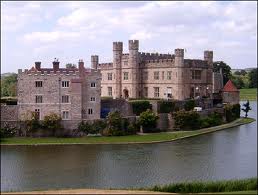 |
| Leeds Castle |
Well, really, what can one say about Leeds Castle? All you really need to know is that they have 14 bedrooms and three cottages on the estate that you can book by contacting them in advance. History? You want the history of the Castle? Click here.
Of course, we personally think the pentultimate place to stay at is Walmer Castle, once home to the Duke of Wellington as Walmer Castle was the official residence of the Lord Warden of the Cinque Ports – a title previously held by both the Duke of Wellington (23 years) and the Queen Mother. The Duke used Walmer often and preferred it to any other home, inviting a stellar line-up of guests to stay for extended periods. The Duke’s great good friend, the widowed Charles Arbuthnot, lived with Wellington at Walmer and they regularly walked the grounds together, often strolling the battlements of the Castle. Wellington’s housekeeper at Walmer fondly called the elderly pair, “our two dear old gentlemen.” Arbuthnot died in 1850 at Apsley House, the Duke of Wellington died in 1852 at Walmer Castle. Today, guests can stay in either the Greenhouse Apartment overlooking the kitchen garden which has supplied the castle for more than 300 years or the Garden Cottage with a master bedroom overlooking the Castle. For a look at all properties available to rent from English Heritage, click here.
